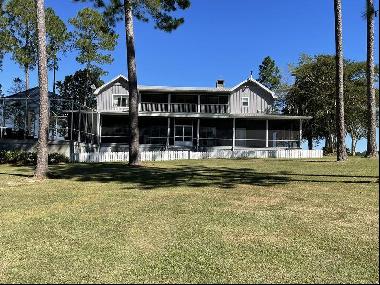
By Hannah Williams
There is a scene in Tom Ford’s 2009 film A Single Man that I think expresses a fantasy of contentment better than anything else I’ve seen on film. In it, George and Jim (played by Colin Firth and Matthew Goode respectively) are in their living room, sitting on either end of the couch, reading. Their feet are touching in the middle, so that they look a little like the two pages of an open book, and between them is a little black and white dog; another is sprawled on the floor next to their shoes. The light is soft and amber, like sunshine filtered through leaves. Each man is dressed in neutral colours, in harmony with the wooden panelling behind them and the books piled on the mid-century shelving behind Jim. Nobody else is needed; nobody else is wanted. It is a fantasy of perfect seclusion into which real life cannot intrude.
The house, which served as both the exterior and interior location for the film, is the Schaffer Residence, designed by John Lautner in 1948. Made of redwood timber and floor-to-ceiling glass, the home has an undeniable fantastical aspect about it, appearing to retreat into the arms of the oaks and sycamores that surround it. Its many windows seem to become pools of water that reflect the sky and the trees.

In the Christopher Isherwood novel that the film is based on, the author hints continually at the fairytale qualities of the couple’s home, writing that they “loved it because you could only get to it by the bridge across the creek; the surrounding trees and the steep bushy cliff behind shut it in like a house in a forest clearing [ . . .] Shaggy with ivy and dark and secret-looking, it is just the lair you’d choose for a mean old story-book monster”. Even the freeway — this is California, after all — remains hidden, as if it belongs to a different world. It’s a house that is open to its surroundings, it should reveal all, but, through some strange magic, manages to conceal everything.
The Schaffer Residence’s real-life beginnings are supposedly just as fairytale. The story goes that the Schaffer family came to the area just after the second world war and used to picnic in the spot, which they loved so much that they asked Lautner to build them a house under the trees. It doesn’t matter to me whether or not this is true; for a house that works so well as the setting for a story, it seems to fit. I feel the same way about the claim on the John Lautner website that Frank Gehry and Frank Escher both count the residence “among their absolute favourite homes” — who could know if that’s true? It’s simply part of the mythos.
The house seems like an obvious fit for a fantasy home: it’s exceptionally beautiful, of course, an architectural masterpiece close to Los Angeles yet in the mountains. But there are a lot of beautiful homes in beautiful places. The real fantasy offered by the Schaffer Residence is the same fantasy as the fairytale cottage; a place in which the realities of the world cannot reach us, in which we are perfectly at one with each other, with the house, with the trees and the sky outside.





















